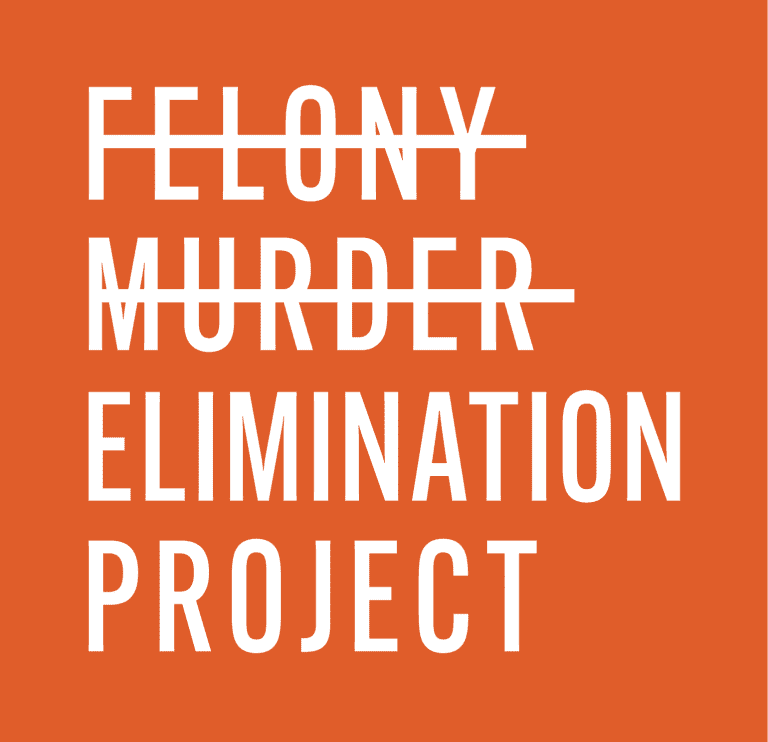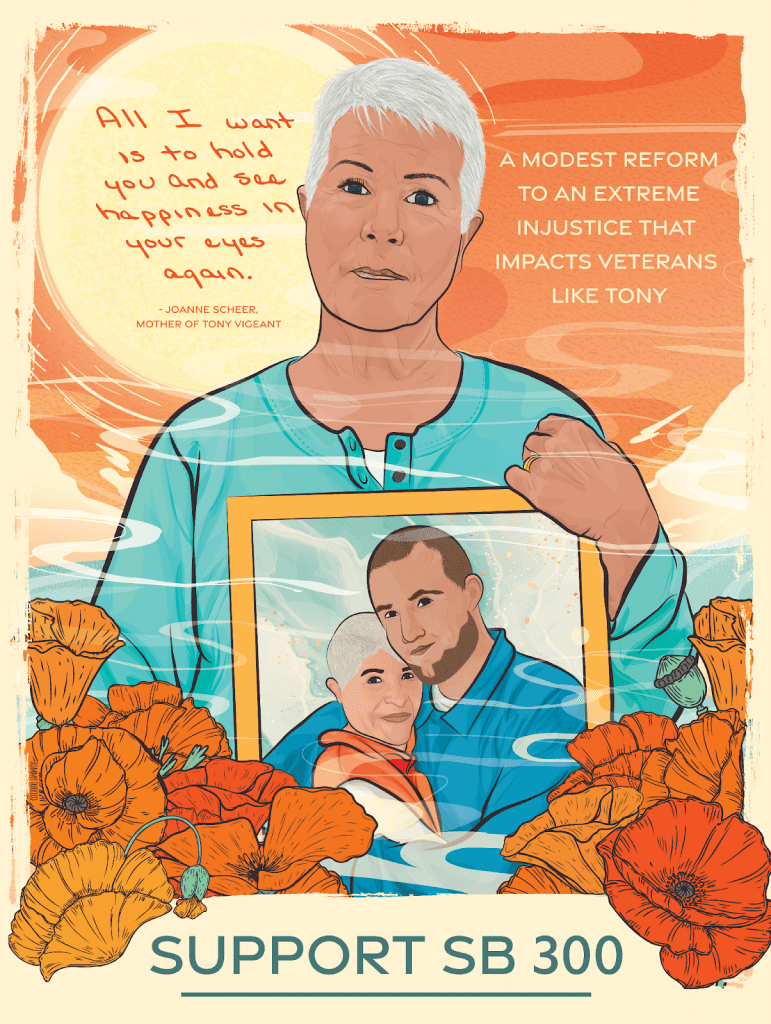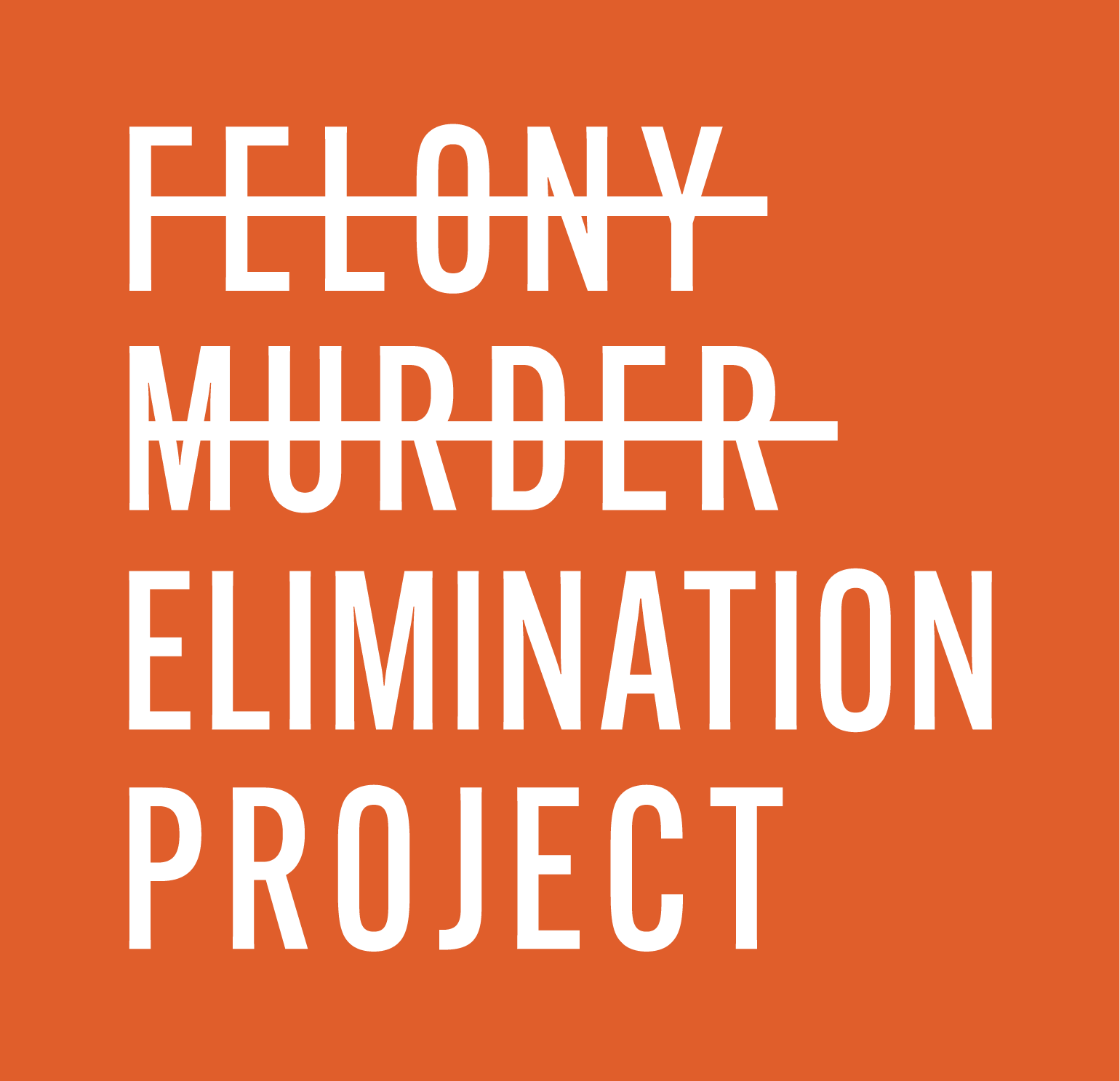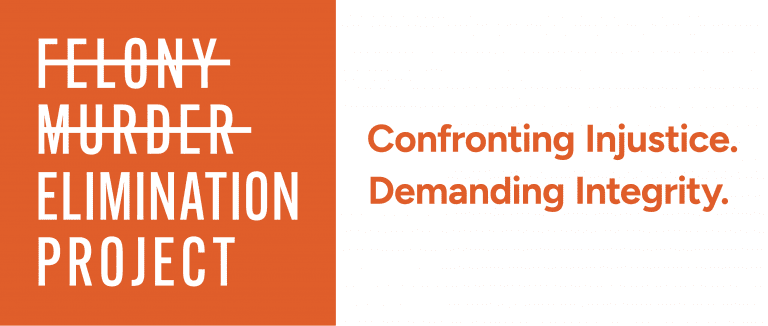Policies
Policy Overview
The Felony Murder Elimination Project is dedicated to passing legislation that will disallow the state from pursuing felony murder charges and to providing solutions to those who are unjustly sentenced. This repository serves as a central hub for all relevant policies, offering detailed analyses and insights to support informed decision-making and advocacy efforts.


Advocacy + Impact
Legislative Advocacy
The organization sponsors and supports bills aimed at reforming the felony murder rule and extreme sentencing. By working closely with legislators, the Felony Murder Elimination Project helps draft, promote, and advocate for policies that ensure justice and fairness.
Public Awareness Campaigns
Through public education initiatives, FMEP raises awareness about the impacts of the felony murder rule. These campaigns engage the community and garner public support for legislative changes.
Collaboration with Stakeholders
The Felony Murder Elimination Project collaborates with a broad range of stakeholders, including other advocacy groups, legal experts, community organizations, and incarcerated individuals and their families to build a strong coalition for reform.
Research + Data Collection
The organization conducts and disseminates research to highlight the disparities and injustices caused by the felony murder rule. This data-driven approach supports informed policymaking, litigation, and advocacy efforts.
Past Policies
Senate Bill 94
Judicial Review for LWOP Sentences
Summary: SB 94 will allow an incarcerated person to petition for judicial review if they were sentenced to life without the possibility of parole (LWOP) before June 5, 1990 and have served a minimum of 25 years.
Purpose: Individuals serving LWOP are locked into indefinite prison terms that are inconsistent with contemporary sentencing practices established by the California Legislature and voters. Despite the stark reality that these individuals will never be able to return home, many have still decided to participate in rehabilitation and exhibit decades of exemplary behavior, participate in extensive positive programming, obtain college degrees, explore personal development, hold jobs and leadership roles within the incarcerated community, and have devoted themselves to becoming positive members of society.
The majority of people serving LWOP are classified as low-risk. According to California Department of Corrections and Rehabilitation’s (CDCR) own risk assessment tool – 88% of people serving life without parole have been assessed with the lowest risk score and tend to have few, if any, citations. Research also conclusively demonstrates that there is little risk for elderly individuals to re-offend upon release.
Key Provisions: SB 94 is structured consistent with the present four- tiered process for release, one of the most thorough processes in the country. First, the incarcerated individual has to file for recall and resentencing. From there they will have the opportunity to present themselves in front of a judge to be considered for resentencing. If resentenced by a judge, the person would then be scheduled for hearing with the State Parole Board to demonstrate that they are suitable to be released with parole supervision. Finally, Parole Board release decisions are reviewed by the Governor’s Office who has the final say in denying or approving the recommendation for release. Post-release, these individuals must adhere to the conditions of parole supervision and all the requirements thereof or risk being re-arrested and re-presented to the Parole Board. Persons convicted of (a) a crime that resulted in the death of a peace officer, (b) any prior or current sex offenses, or (c) were found to have three or more homicides (serial killer) are excluded from sentencing relief under this bill.
At each level, public safety is a paramount concern. By utilizing the four-tiered process we are ensuring that only those who have been rehabilitated and have the potential to positively contribute to the community will be released. Judges will have complete discretion to leave the sentence unchanged if they determine that mitigating factors are not just-cause for resentencing. SB 94 demonstrates our faith that the judicial system, parole board, and executive branch work to ensure public safety and rehabilitate our incarcerated population. We must retroactively address our harmful criminal justice policies and afford second chances where earned.
Status: Two-year, simple majority vote bill, was held in its second year on the Assembly floor.
House Bill 3638
(Oklahoma) Limiting the Use of Felony Murder in the Oklahoma Death Penalty
Summary: This bill would require that a person cause a death through their own actions in order to be given the death penalty in Oklahoma. This bill would allow resentencing for those who are currently on death row if they did not cause a death through their own actions. This bill would create a parity provision in Oklahoma sentencing that ensures that those who did not directly cause a death are not sentenced more harshly than those that did.
Purpose: There are currently 36 people on death row in Oklahoma. A small subset of those individuals (6 to be exact) were sentenced to death despite the fact that there was no finding that their actions directly led to a death. In some of these cases, the person who was found to be the actual killer received a less severe sentence. Sentencing people to death who neither killed nor intended to kill is unfair, unjust, wastes resources, and doesn’t accomplish the law’s objective to limit the death penalty to only those whose extreme culpability makes them most deserving of the ultimate punishment.
Oklahoma is unlike most other states, including Alabama, Louisiana, Missouri, and South Carolina, in which a jury is required to consider the extent to which a defendant participated in a murder in order to determine the appropriateness of the death penalty. Oklahoma has no such provision. This means that people on death row in Oklahoma can have a comparatively low level of culpability and participation in a crime and still face execution. In states like Kansas, people who did not directly kill are not and have never been eligible for the death penalty. Kansas has a significantly lower homicide rate than Oklahoma. Given that Oklahoma has the highest historical execution rate per capita of any state, limiting the death penalty to actual killers will move Oklahoma towards the national consensus that death penalty sentencing should be reserved for only the most culpable.
Senate Bill 300
Limiting the use of Felony Murder in Life Without Parole and the Death Sentence in California
Summary: SB 300, authored by Senator Dave Cortese, sought to reform California’s felony murder special circumstances law. The bill aimed to ensure that the death penalty and life without the possibility of parole cannot be imposed on individuals who did not intend or cause a death during the commission of a felony. It sought to restore judicial discretion to impose a sentence of 25 years-to-life if parole eligibility is deemed to serve the interest of justice.
Purpose: SB 300 aimed to address the injustices associated with the felony murder special circumstances law. By prohibiting the imposition of the death penalty and life without parole on individuals who did not intend or cause a death, the bill sought to introduce fairness and proportionality in sentencing.
Key Provisions: The bill sought to restore judicial discretion, allowing judges to impose a sentence of 25 years-to-life with the possibility of parole if it serves the interest of justice. This change recognizes the varying degrees of culpability among individuals involved in a felony that results in a death.
Impact: Senate Bill 300 made it through all committees in the California legislature, passed the Senate Floor, but stalled on the floor of the Assembly. If passed, SB 300 would have significantly reduced the number of individuals serving extreme sentences for crimes they did not directly commit, promoting a more just and equitable legal system.
Status: Two-year, 2/3 majority vote bill, was held in its second year on the Assembly floor.
Senate Bill 1437
Repealing Second Degree Natural and Probable Consequences Doctrine and Limiting Felony Murder Convictions in CA
Summary: Co-authored by Senators Nancy Skinner and Joel Anderson, SB 1437, passed in 2018, was a landmark legislation that reformed the felony murder rule by restricting the circumstances under which individuals could be charged with first-degree murder. It allowed for the resentencing of those previously convicted under the old rule.
Purpose: SB 1437 sought to restrict the application of the felony murder rule and allow for the resentencing of individuals previously convicted under the old law.
Key Provisions: The bill limited the circumstances under which first-degree murder charges could be applied and provided a legal pathway for those already convicted to seek resentencing.
Impact: SB 1437 was a significant step towards addressing the injustices of the felony murder rule. As of 2022, the bill has led to the resentencing of 470 people, eliminating approximately 10,380 years of prison sentences, and saving the state of California $1.1 billion dollars.
Status: One-year, simple majority vote bill, was passed and chaptered.
Senate Concurrent Resolution 48
An Act to educate legislators on the need to reform felony murder
Summary: Co-sponsored by Felony Murder Elimination Project in 2017, SCR 48, authored by Senator Nancy Skinner, called for a comprehensive review and reform of the felony murder rule in California.
Purpose: SCR 48 called for a thorough review and reform of the felony murder rule.
Key Provisions: The resolution highlighted the need for legislative and judicial changes to address the inequities of the felony murder rule.
Impact: SCR 48 contributed to the momentum for subsequent reforms, including SB 1437 and SB 300.
Status: One-year, simple majority vote resolution, was passed and chaptered.
Assembly Bill 2195
Data Collection at Trial of Felony Murder Convictions
Summary: Sponsored by Felony Murder Elimination Project in 2016 and authored by Assemblymember Susan Bonilla, AB 2195 was the first legislation to address the felony murder rule since 1999. The bill aimed to bring significant changes to how felony murder charges are prosecuted and sentenced.
Purpose: AB 2195 aimed to reform the prosecution and sentencing practices related to the felony murder rule.
Key Provisions: The bill introduced measures to ensure that individuals who did not directly commit a murder or have intent to kill are not subjected to the harshest penalties.
Impact: Although not passed, AB 2195 set the stage for future legislative efforts and raised awareness about the need for reform.
Status: One-year, simple majority vote bill, did not pass Senate Appropriations.






